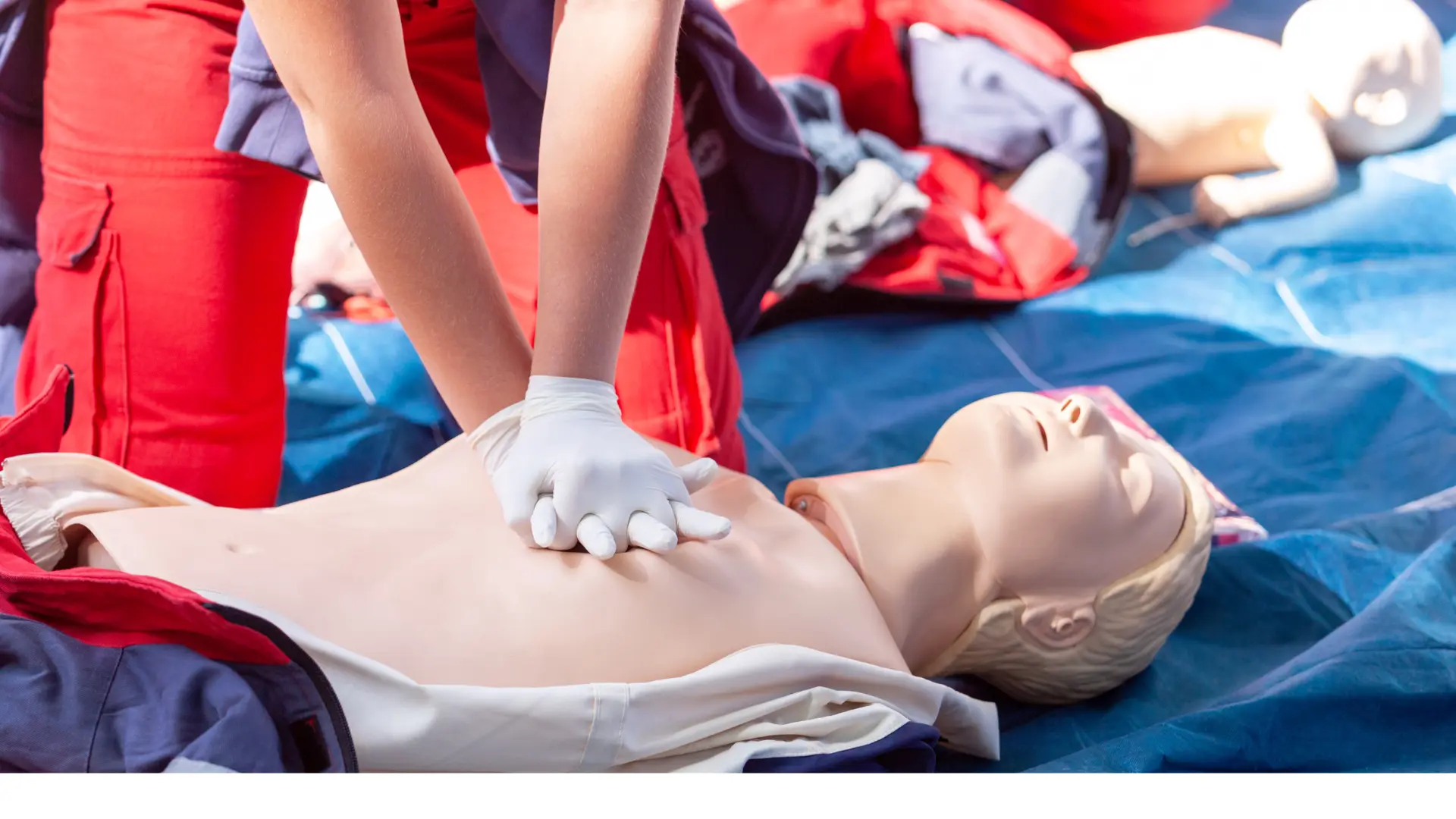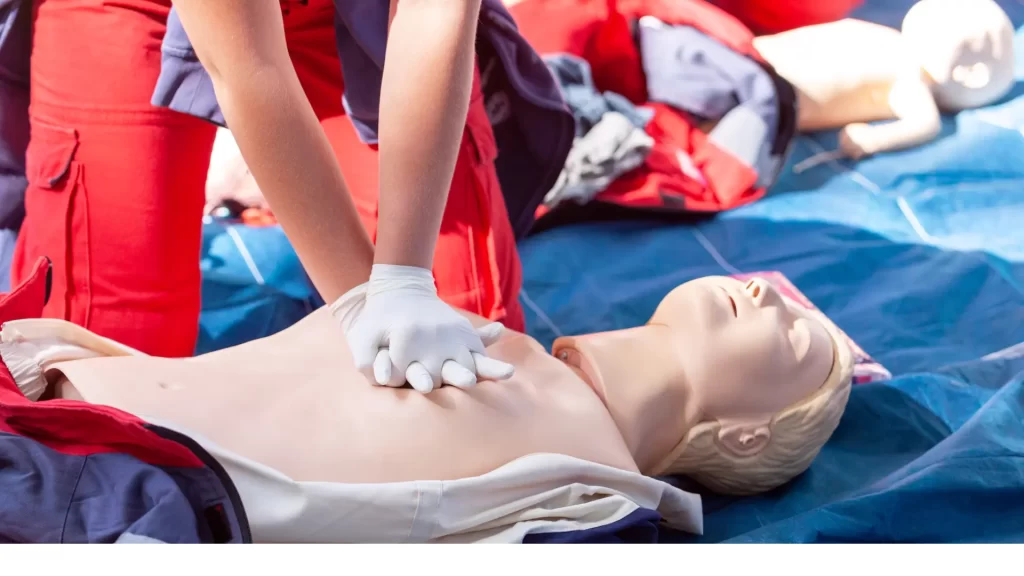Hands-Only CPR: A Simple Skill for Extraordinary Moments

Hands-Only CPR: A Simple Skill for Extraordinary Moments

In the face of a medical emergency, staying calm and taking action can make all the difference. When someone experiences cardiac arrest, their heart stops beating and blood flow ceases. This critical situation demands immediate intervention to improve the chances of survival. Hands-Only CPR, a simplified cardiopulmonary resuscitation technique, empowers bystanders with the knowledge to act swiftly and potentially save a life.
What is Hands-Only CPR?
Hands-Only CPR is a form of CPR that focuses solely on chest compressions, eliminating the need for rescue breaths. This simplified approach makes it easier for bystanders with no formal CPR training to intervene during a cardiac arrest. By pushing hard and fast on the center of the victim’s chest, Hands-Only CPR helps circulate oxygen-rich blood throughout the body, buying precious time until medical professionals arrive.
Why is Hands-Only CPR Important?
Every minute counts during a cardiac arrest. Brain cells begin to die within minutes of the heart stopping, and the longer CPR is delayed, the lower the chances of survival. Hands-Only CPR addresses this critical time factor by offering a quick and easy-to-learn technique that anyone can perform.
Here’s why Hands-Only CPR is so important:
- Increased Bystander Intervention: Many people hesitate to perform CPR due to a lack of training or fear of making mistakes. Hands-Only CPR removes these barriers by offering a straightforward method that requires minimal instruction.
- Focus on Chest Compressions: Studies have shown that chest compressions are the most crucial element of CPR in maintaining blood flow during cardiac arrest. Hands-Only CPR prioritizes this lifesaving action, ensuring uninterrupted compressions.
- Improved Survival Rates: Early initiation of CPR, even with just chest compressions, can significantly increase the chances of survival after a cardiac arrest. Hands-Only CPR empowers bystanders to act quickly and potentially save a life.
Who Can Perform Hands-Only CPR?
Hands-Only CPR is ideal for anyone who wants to be prepared to help in an emergency, regardless of prior medical training. It’s particularly beneficial for:
- People with No Formal CPR Training: Hands-Only CPR offers a user-friendly alternative for those who haven’t received formal CPR training.
- Individuals Uncomfortable with Mouth-to-Mouth Resuscitation: Some people may hesitate to perform CPR due to concerns about mouth-to-mouth contact. Hands-Only CPR eliminates this barrier, allowing them to still provide vital assistance.
- Those with Previous CPR Training But Feeling Unprepared: If your CPR training is outdated or you lack confidence in performing full CPR, Hands-Only CPR offers a way to intervene confidently.
When to Perform Hands-Only CPR
Hands-Only CPR is recommended whenever you encounter an adult or teenager who is unconscious and not breathing normally. Signs of ineffective breathing include shallow or gasping breaths, or no chest movement at all. Here are some situations where Hands-Only CPR might be necessary:
- Witnessing someone collapse suddenly.
- Finding someone unconscious and unresponsive.
- Noticing abnormal breathing patterns, such as gasping or agonal respirations (agonal breathing involves shallow, infrequent breaths).
It’s important to remember that Hands-Only CPR is not recommended for infants or children. Traditional CPR with rescue breaths is preferred for these age groups.
How to Perform Hands-Only CPR
Performing Hands-Only CPR is a straightforward process that can be learned in just a few minutes. Here’s a step-by-step guide:
- Call for Help: The first and most crucial step is to call emergency services immediately. If someone else is present, delegate this task to them. If you are alone, perform CPR for about 60 seconds before calling for help.
- Position Yourself: Kneel next to the victim on a firm, flat surface.
- Place Your Hands: Locate the center of the victim’s chest, between the nipples. Place the heel of your dominant hand on the sternum (breastbone).
- Interlock Your Fingers: Interlace the fingers of your other hand on top of your first hand. Ensure your fingers are not touching the ribs or the victim’s soft tissues.
- Push Hard and Fast: Push down on the chest with the heel of your hand, using your upper body weight to compress the chest by at least 2 inches (5 centimeters). Aim for a rate of 100 to 120 compressions per minute.
- Minimize Interruptions: Maintain a steady rhythm of compressions and avoid stopping for more than 10 seconds. Focus on delivering forceful and rapid chest compressions.
- Continue CPR: Continue Hands-Only CPR until help arrives or the victim starts showing signs of life, such as regaining consciousness or normal breathing.
CPR and Automated External Defibrillators (AEDs)
The integration of Hands-Only CPR with the use of Automated External Defibrillators (AEDs) can further enhance survival rates in cardiac arrest cases. AEDs are portable devices that can diagnose and treat sudden cardiac arrest by delivering an electric shock to restore a normal heart rhythm.
Availability of AEDs: Increasing the availability of AEDs in public places, such as schools, airports, shopping centers, and workplaces, is crucial. When an AED is used in conjunction with Hands-Only CPR, the chances of survival can significantly increase.
Training on AED Use: Alongside Hands-Only CPR training, educating the public on how to use AEDs is essential. AEDs are designed to be user-friendly, with visual and audio prompts to guide users through the process. Familiarity with these devices can ensure that bystanders feel comfortable using them in emergencies.
Common Myths About Hands-Only CPR
Despite its simplicity and effectiveness, several myths and misconceptions about Hands-Only CPR persist. Addressing these myths can help increase public confidence in performing this life-saving technique.
Myth 1: Hands-Only CPR is not as effective as traditional CPR.
While traditional CPR that includes rescue breaths is still recommended for certain situations, such as drowning or pediatric cardiac arrest, CPR is highly effective for adult victims of sudden cardiac arrest. The focus on continuous chest compressions ensures that vital organs receive the necessary blood flow.
Myth 2: Chest compressions alone cannot save a life.
Numerous studies have shown that high-quality chest compressions are sufficient to maintain circulation and improve survival rates. CPR can double or triple a person’s chances of survival if performed immediately.
Myth 3: Only trained professionals should perform CPR.
Hands-Only CPR is designed for untrained bystanders. The simplicity of the technique means that anyone, regardless of their background, can perform it and potentially save a life.
Conclusion
Hands-Only CPR is a simple, effective, and accessible technique that can save lives in cases of cardiac arrest. Its focus on chest compressions makes it easy to learn and perform, empowering bystanders to take immediate action during emergencies. The importance of CPR cannot be overstated, as it bridges the critical time gap between the onset of cardiac arrest and the arrival of professional medical help.
Are you ready to make a difference in your community? Equip yourself with the life-saving skills you need by enrolling in a CPR class. Choose your training location and book your class with CPR Classes Near Me using the calendar below. Our expert instructors are ready to provide you with hands-on training and essential CPR skills.
AHA BLS CPR & AED Classes
About Author:
admin
Recent Posts
- Need American Heart Association CPR in Austin? Get Certified Today!
- Beyond the Beltway: Why Arlington Parents are Heading to Virginia Beach for Infant CPR
- Top 5 Reasons to Get CPR Certified in Columbus, OH Today
- How to Get CPR Certified in Columbus, OH: Step-by-Step Guide
- What Is CPR Certification and Who Needs It in Columbus, OH?
